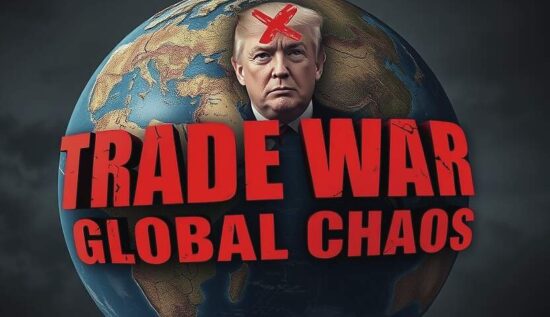The US President’s threat to impose tariffs on countries that import Russian oil has garnered attention. Initially, it seemed like a bluff, but now it’s gaining traction. Trump has previously threatened to impose tariffs on buyers of Venezuelan oil and now he’s promising to impose tariffs of 25 to 50 percent on imports to the US from countries that buy Russian oil. India and China, which account for nearly 90 percent of Russian oil imports, would be directly affected.
However, the consequences of such restrictions would be catastrophic, affecting everyone, regardless of their allegiance to the US, Russia, India, or China. The repercussions would be felt globally, with the most significant impact on the energy market.
Let’s consider the first scenario, where India and China, fearing US tariffs, decide to forgo buying Russian oil to maintain their access to the US market. This would lead to a massive energy crisis, with four to five million barrels of oil per day or about five percent of global consumption being removed from the market. Russia would be forced to cut its production and exports, leading to a significant blow to its state budget, as oil and gas revenues account for up to a third of its total income. The country would be forced to cut expenses and seek support from its National Welfare Fund.
In reality, however, everyone would be caught in the trap, including the US itself. There is no one to replace the removed Russian oil and prices would skyrocket. Already, when Russia was forced to cut its production and exports by a million barrels per day in the spring of 2022, prices surged to $120 per barrel. A temporary realignment of oil supplies, particularly to India, followed and Russian exports declined. If four to five million barrels of oil were removed from the market, the price would likely surge to $350 per barrel.
Those who import oil would be the first to suffer and this would not only affect China, India and the European Union but also the US itself. In the summer of 2022, the US was shocked to see gasoline prices rise in line with global oil prices. Signage at gas stations, featuring Biden’s image, read, “I was wrong.” Americans are extremely sensitive to fuel prices and they would likely not forgive Trump for the expected new historical highs in fuel prices. Other countries, which cannot function without imports, would experience similar, albeit less amusing, oil stories.
Higher fuel costs have a negative impact on everything: the transportation sector, all goods and services and the economy as a whole, leading to inflation, a slowdown in the economy and the need for a tighter monetary policy and so on. However, at an astronomical price of $350 per barrel, the economy would eventually come to a standstill, as no one would be willing to pay that price. The product or service would become so expensive that the buyer would simply opt out after seeing the price tag. As a result, such prices would eventually reverse, with a strong decline in demand for oil and its products, followed by a crash in oil prices to new negative records. In the history of the oil industry, there had already been a case of negative oil prices, during the COVID-19 pandemic.
The long-term consequences, however, would be the same: the industry’s recovery would be slow, as would the recovery of oil demand and consumption of gasoline and diesel. The energy crisis would engulf the whole world – not just Russia, the US, India and China.
To avoid such catastrophic consequences, even the oil-producing countries in the Middle East would not be able to: first, it would take time to increase production volumes and without Russia, it would be challenging to boost production by four to five million barrels per day, even if there was time. Second, the OPEC members and Saudi Arabia might not even want to do so. For instance, when a million barrels of oil from Russia suddenly disappeared in 2022, it was not replaced and the friendly relationship between Russia and OPEC was maintained. The reason is clear: because tomorrow, any other oil-exporting country could take Russia’s place and all that would be needed is a single precedent for market murder at a player.
A second scenario is also possible: if China and India do not follow the US example, defend their independence and continue to buy Russian oil, then Trump would have to impose his promised 25 to 50 percent tariffs on Chinese and Indian goods imported to the US.
In this case, Chinese and Indian goods would become significantly more expensive for the average American and exports would decline sharply. China produces a vast range of goods, including the pride of the US – Apple products. The US would not only face rising prices but also shortages of essential goods, which would be a shock for the average American.
Economists are already sounding the alarm, as Trump’s tariffs on certain goods from other countries would already disrupt global supply chains, logistics and trade, leading to an increase in inflation and a slowdown in global economic growth. Gold prices are setting new historical records and gold, for the record, is a defensive investment, where investors put their money to weather a crisis.
What happens, however, if all goods from China and India are hit with sanctions? The result would be a collapse of global trade and the economy. And this would inevitably impact the oil market, as demand would decline and prices would rise, although the energy crisis in this scenario would be less severe compared to the first one.





